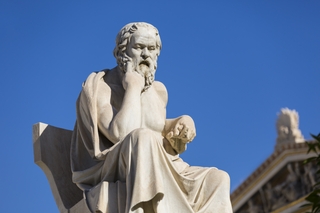
A Tesla Road Trip
For our family vacation this Summer, we decided to explore Santa Fe, New Mexico. I thought it would be a fun road trip from Austin, Texas and decided to drive my Long Range Model 3.
Here’s what I learned.
Routes
First, I checked Google Maps to get an estimate of miles and duration. It estimated ~680 miles and 10.5 hours, without breaks.
Then I visited Tesla.com/trips to see if it was a feasible trip and Tesla indicated almost 760 miles and 13.5 hours, including 4 stops to Supercharge.
At that point, I was debating the use of the Tesla for this trip but someone recommended ABetterRoutePlanner.com (ABRP) so I tried it.
It really is a better route planner taking into account things like State of Charge (SoC) upon leaving, estimated state of charge on arrival, reference speed, max speed, additional weight (passengers + luggage), elevation, wind speed, wind direction, outdoor temperature, road conditions and types of chargers you’d like to use.
When you load ABRP in the Model 3’s browser, it even shows an option to Send to Tesla Nav – providing you’ve connected your Tesla account to your ABRP account.
It’s very comprehensive, but I would soon learn that it’s not perfect and can’t realistically take every variable into account.
Departing
ABRP recommended that we depart with 90% SoC but we left home with 100% SoC – and it’s a good thing we did. ABRP estimated that we’d arrive in Cisco, TX with 33% charge but even after departing with 100% SoC, we arrived with less than 10%. Given that this was my first real road trip in my Model 3, it created quite a bit of anxiety.
After that, I ignored ABRP’s recommended departure SoC and charged to 90% or 100% each time.
My best guess is that I/ABRP didn’t properly account for the weight of the luggage and the outside temperature – it was over 100 degrees each day and we were running the AC constantly. Even with window tint on the sides and rear, the heat from the sun through the windshield was significant. I’ll probably tint the front windshield in the future to help.
After compensating by “overcharging” for the rest of the trip, we made it to Santa Fe without issue.
When we arrived, I charged to 90% at the local Supercharger, then headed to our AirBnB. The homeowner had an outdoor outlet on the front porch, close to the driveway, so every night, I would plug-in using my Tesla Mobile Charger and charge to 90%. It was slow of course, but we didn’t do much driving when in Santa Fe so it worked out perfectly. Even better, I didn’t have to visit the Supercharger before we began the return trip home.
Returning
I chose a different route on the way home. On the way to Santa Fe, we spent 10+ hours traveling on the first day and around 5 on the second day.
I decided to break up the trip into two shorter days on the way home and selected a different route.
Again, this was a mistake.
ABRP indicated that we could travel from Amarillo, TX to Sweetwater, TX and arrive with a 14% SoC. Based on my earlier experience, I knew this wasn’t going to be accurate. I worked the problem and came up with a solution: we stopped for dinner at the Overton Hotel in Lubbock where they had four Tesla Destination Chargers.
We charged for almost 2.5 hours while we had a nice, leisurely dinner and added about 110 miles of range.
We arrived at our hotel (where the Supercharger was*) in Sweetwater with plenty of charge to spare.
Finally, after leaving Sweetwater for Austin, we had a similar scare. We were traveling at the speed limit (75 MPH in Texas) when we received a warning: “Reduce speed to below 75 MPH to arrive at destination.” This is Tesla’s polite way of saying, “Yo! You are going to have to call a flatbed truck to take you to the nearest Supercharger if you don’t conserve your battery.”
After dropping to 75 MPH, I received the same warning, indicating that I should travel below 60 MPH.
The car indicated that we would arrive with 9% SoC and as you would expect, I didn’t want to risk it. We ended up driving further South to the Supercharger in Junction, TX where we grabbed a snack and charged to 90% SoC before heading to Austin. It added about an hour to the trip but we were all more relaxed (and cool, since we could run the AC without concern) so it was worth it.
We arrived home with about 100 miles of estimated range.
Final Thoughts
We need more Superchargers, Elon! 😉
This is a common complaint, so I won’t belabor the point – especially when you consider that the estimated cost to build out a Tesla Supercharger station is around $250,000.
The fuel savings are significant.
We estimate that we saved more than $200 compared to driving my wife’s 2016 Toyota Highlander on this trip – even with the slight premium we paid for Supercharging. (Charging at home is typically much less expensive.)
Enter complete data when planning your route.
ABRP is a great tool, but if you don’t feed it good data, it can’t accurately – and safely – predict your route. In this instance, I didn’t properly account for actual travel speed, elevations and topography, external temperature (which affects AC usage), wind speed and direction (West Texas is windy as hell – that’s why there are wind farms everywhere), and luggage weight.
A Standard Range Model 3 seems like it’s only good for local driving – for now.
I have a Long Range Model 3 and I could barely make it between Superchargers on my route. A Standard Range Model 3 would never have made it. (We need more Superchargers, Elon!) Granted, your route and destination matters – we traveled through the wide expanse of West Texas to get to New Mexico – so it might be different for other destinations.
I would do it again.
It was fun but more importantly, I really can’t drive an ICE car anymore. I find it cumbersome. I will drive my Tesla everywhere, range permitting.
Footnotes
* Tesla must have cut a nice deal with Holiday Inn as most of the Superchargers we encountered were in Holiday Inn/Express parking lots. Learning what I did on this trip, I will always choose the hotel with the Supercharger, event if it costs a few dollars more. Score for Holiday Inn.

